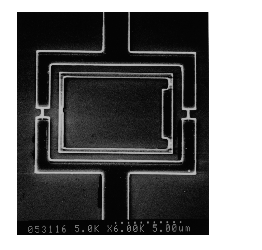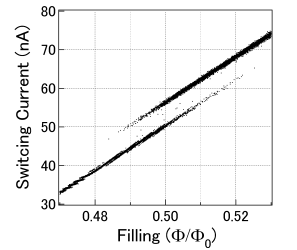Material Science Laboratory
*NTT Research Professor, Tokyo Institute of Technology
@A quantum computer is expected to perform fast parallel computation. Realizing a quantum bit (qubit), which is a basic element of a quantum computer, requires the ultimate controllability of the quantum system. We achieved a single shot readout of states in flux qubit with superconductor ring. Thanks to recent developments in nanotechnology, we have come close being able to control quantum states, which is a new paradigm of physics. The flux qubit has two fundamental quantum states that have current circulating in clockwise and counterclockwise directions. The readout of the states is performed by a DC-SQUID (superconductor quantum interferometer) aligned close to the qubit (see Fig.1). The DC-SQUID can detect the magnetic flux generated by qubit circulating current. We experimentally analyzed the readout characteristics of the flux qubit and found that our DC-SQUID is capable of reading out the qubit state with sufficient accuracy (see Fig. 2). The quantum state has so far been used to explain behavior of individual atoms, electrons and so on. But in superconductor ring, the quantum state is carried by more than a millions of Cooper-pairs. Therefore, dynamics of this system are called macroscopic quantum phenomena and are often discussed as regards the manifestation of Schrodinger's cat. This means that the mechanism of this system is of interest not only from computational viewpoint but also from physical aspects.
[1] H. Tanaka et al., Physica C 368 (2002) 300.
[2] H. Tanaka et al., Supercond. Sci. Techonol. 14 (2001) 1161.
[3] H. Takayanagi et al., Proc. of Jubilee Nobel Symposium (Dec. 2001, Goteborg Sweden), to be published in Physica Scripta.
 |
 |
||||
|
|